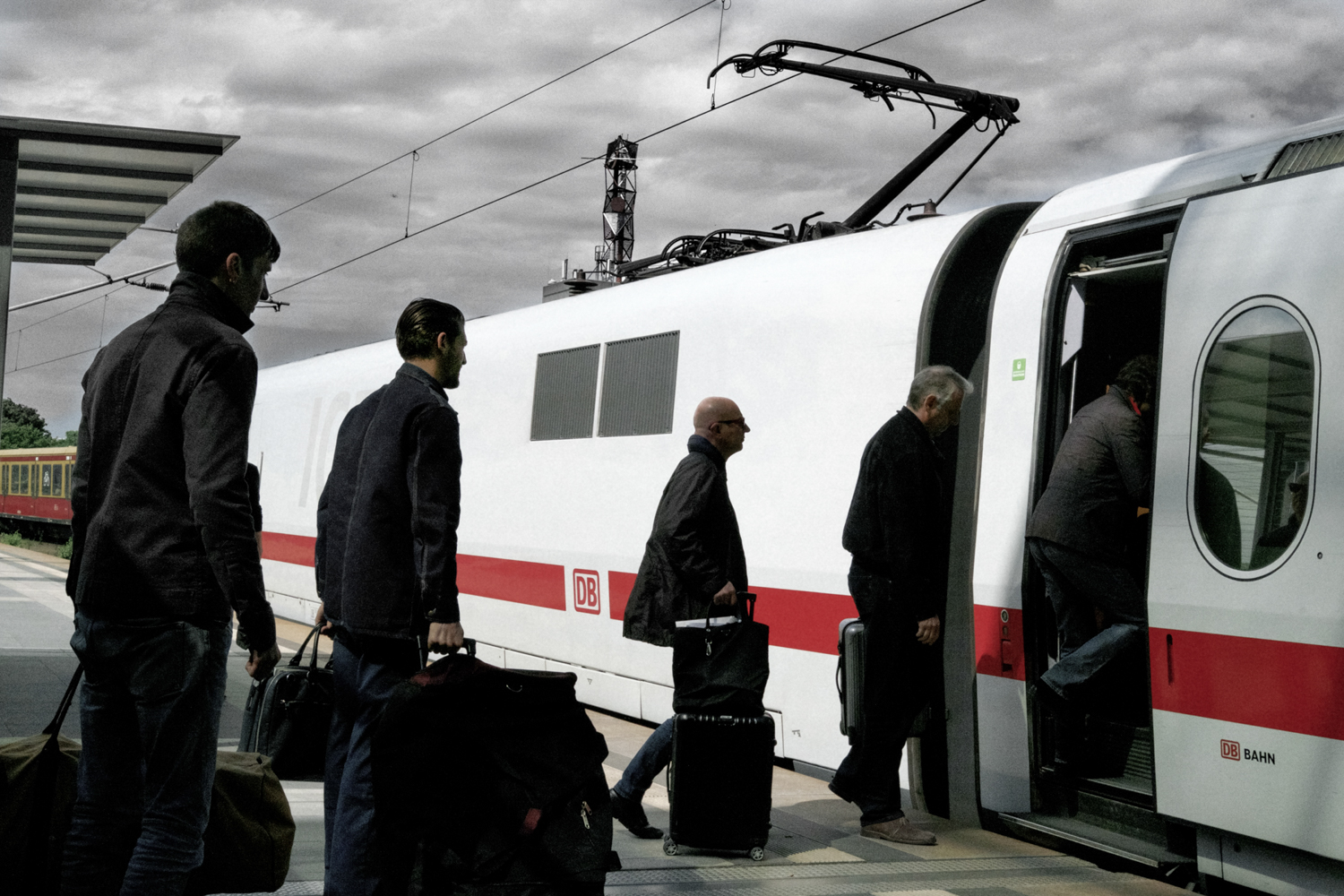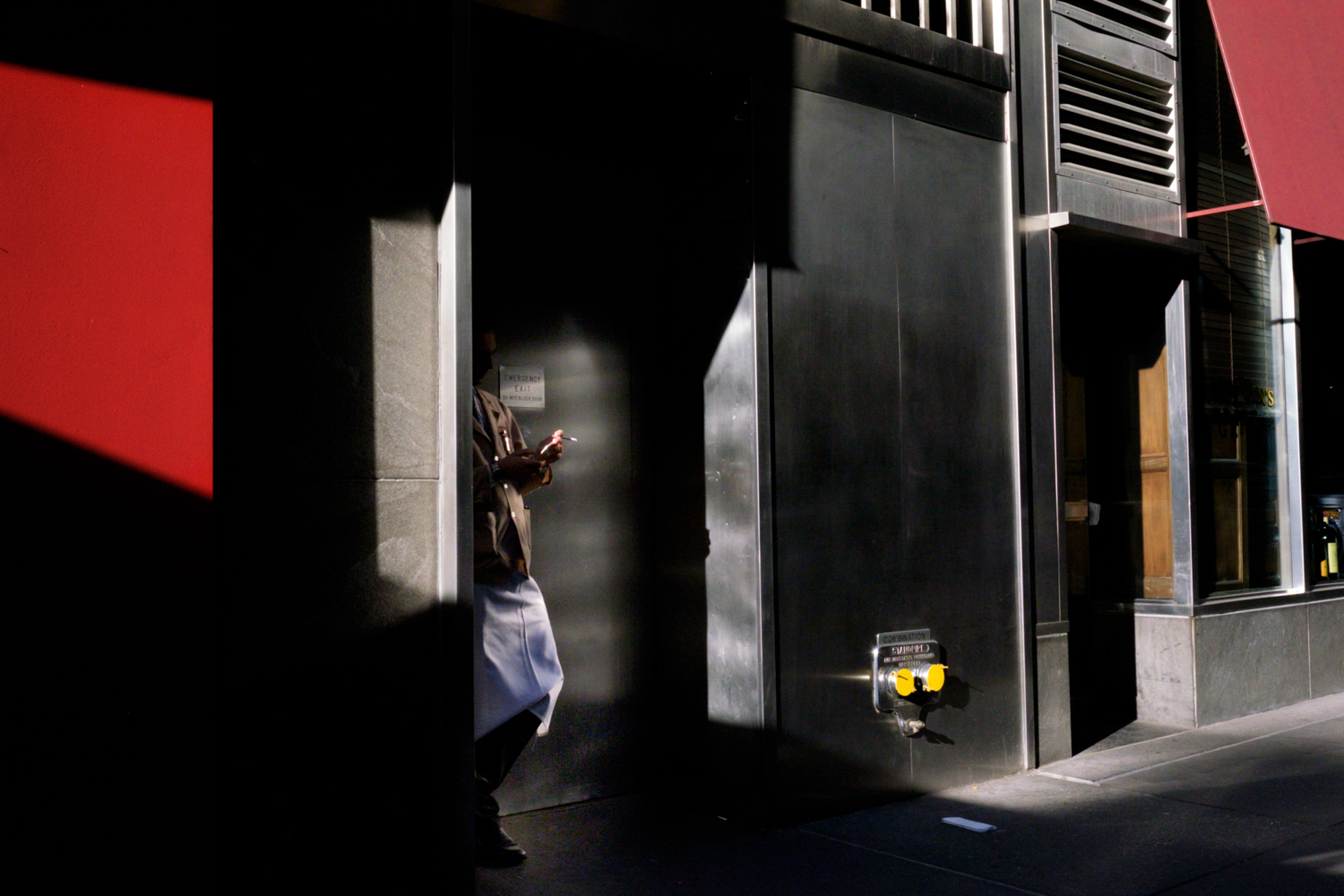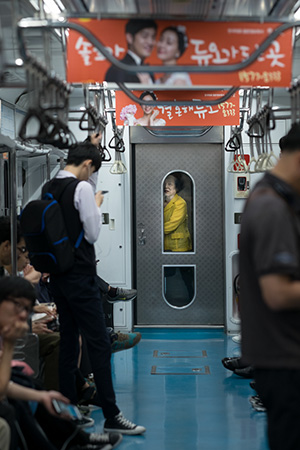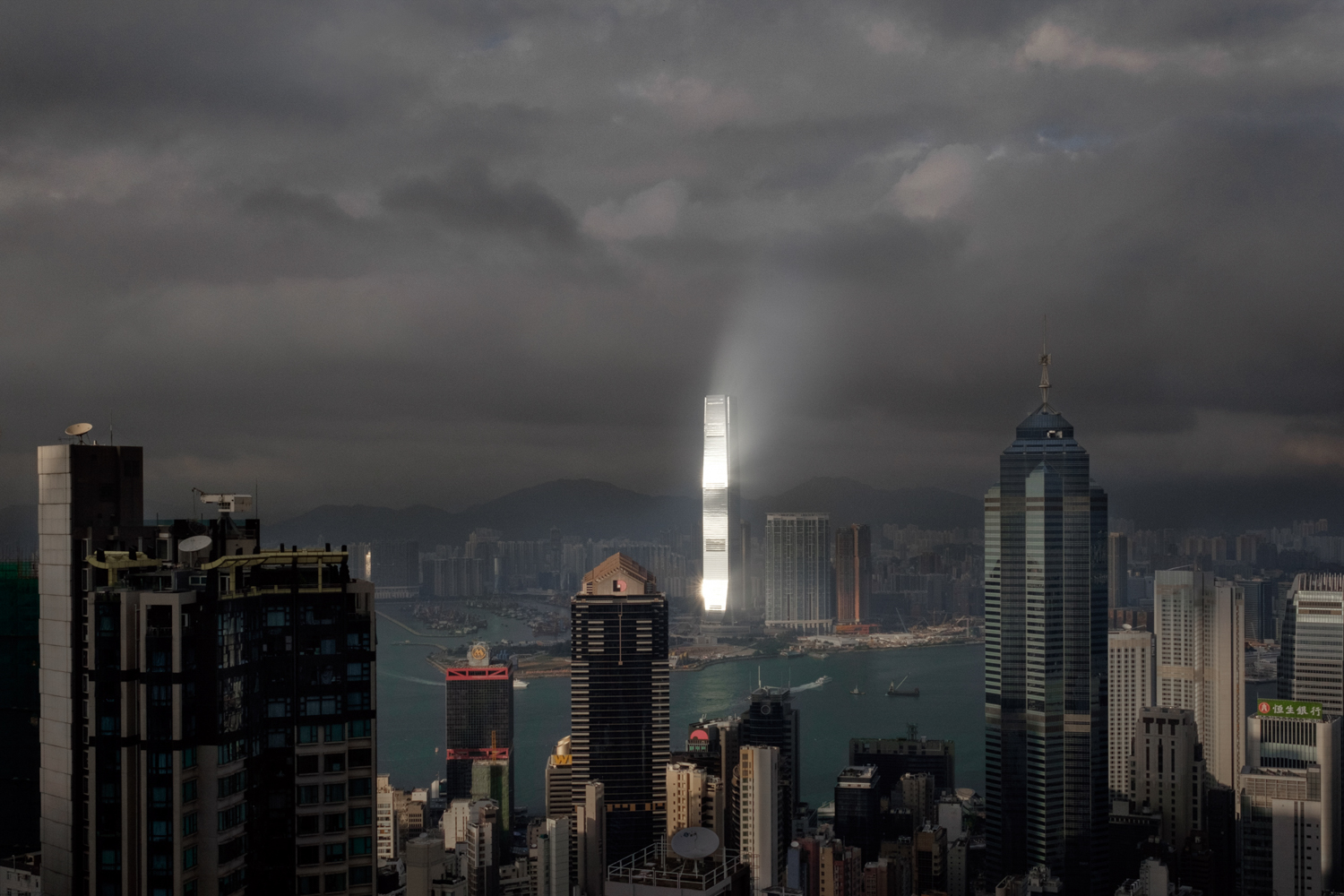It’s not very often that a photobook on Kickstarter can pry my credit card out of my wallet. But David Gaberle’s new book, Metropolight: A Photobook is that kind of a book. The work spans 4 continents and depicts the modern metropolis as a place of common experience that unites and isolates at the same time. I talked with David about the his work and how the book came to life. Hit the jump for more!
Metropolight: A Photobook By David Gaberle

David Gaberle’s Metropolight is a new street photography book that examines the human condition in the 21st century metropolis. Even though modern cities bring people together many city dwellers experience a life filled with isolation and loneliness. David’s work seeks to find the simple beauty in this paradox and seems to portray individual citizens as inexorably tied to urban landscape they inhabit. Metropolight is the first collection of this work to be published.
The Kickstarter campaign is already fully funded but you can still pick up a copy of his book for a great price. Deluxe editions are also available that include upgraded cover material as well as a print.
I spoke with David about his work, and the new book. Here’s what he had to say:
StreetShootr: Hi David, tell us a little bit about yourself. How long have you been shooting and what brought you to make this book?
David Gaberle: I’m 27 years old and I started shooting when I was 22. I remember getting really nervous in overcrowded places. So a friend of mine at the Jazz club where I worked said, “Interrupt yourself somehow. Turn it into something else.” And I started carrying a camera around and shooting people on the subway. It was all very raw and instinctive. I had no photography education.
After 2 weeks I really relaxed and I thought, “This is amazing. If photography can do this for me in 2 weeks, what can it do for me in a lifetime?”
SS: How did you become interested in street photography?
DG: It took me a few months to discover that I’m actually doing street photography. Because I bought my first book by a Czech photographer, Viktor Kolar.
SS: I know Viktor Kolar! He did a series of photographs on Canada.
DG: He did indeed! He was friends with a couple of photographers in Canada.
But I got his book called Ostrava. He came back from Canada after a few years because he said it’s too nice there for him to shoot. He went back to Czech Republic and it was a Communist country back then so they put him in a coal mine. And he shot this book about the city for 30 years.
That was my first book and I loved it. I called him up and I met up with him. And he was like, “Ya, you have talent but you’re still a rookie so keep working.” And so that was how I discovered street photography. And I thought, okay now I want to start getting close to people because Kolar gets close to people. And it took me a while to realize I’m not that kind of person. Sometimes I like to get close to people if I feel comfortable in the situation. But sometimes I also like to keep my distance like Saul Leiter. And he uses really long lenses so for me that’s kind of comfortable as well.

I always carry 4-5 lenses on me and I just switch. Maybe I switch 20 times in one afternoon. If I see something I try different perspectives, I change angles, I change lenses all the time. Just trying to work out the perfect angle for the shot.
I tried the first Fuji X100 and I really loved it but after a few months I felt that I was interested in other perspectives. Because I can see other photographers that are doing a different thing and I want to flatten the perspective, make it look a bit more like a painting or something. And that is how I got into the interchangeable system and different lenses.
SS: You brought up Fuji. You’re an X Photographer as well?
DG: Yup, I’m an ambassador for the brand.
SS: How did that come about? Did they approach you?
DG: It was a very interesting process. Because when I started shooting, I bought the X100 because it was silent and I was shooting people on the subway. And I was like, I wish I worked for them or something. And I looked up the brand and they were looking for someone to sell cameras to camera stores around the city in Prague. So that’s what I started doing and I still do it sometimes now.
And it’s cool because I can stand there and I work on my iPad and I work on my whatever photos or something and when people come in and I pay attention to them and I sell the cameras. So I’ve been with them four and a half years now. It took me half a year before I started working for them. And I kept just giving them photos and eventually they made me a Fujifilm photographer. And then it took a little more time to become an ambassador. But I’m the only street photographer for Fuji in the Czech Republic so I was an obvious choice.

SS: So it’s safe to assume you shoot with Fuji gear?
DG: I’ve been shooting the X-Pro2 but most of the Metropolight project was shot with the X-T1. I love it because I use the flip out screen a lot. Exactly because of the fact that I’m shy. I try not to be very obvious. So basically I have it at my hip and I just look down and shoot without many people seeing what I’m doing.
SS: Let’s talk about your photographs. What’s the thing that catches your eye when you’re out shooting?
DG: I have a very structured brain and I’m much better at perceiving straight lines and very clear structures in the city. So I’m attracted to architecture like that. I think that’s one thing that holds the images together a lot.
Right now, there’s 35-37 photos in the book but they’re picked from tens of thousands of photos. I’ve been very selective to make sure the work holds together beyond the single image.
SS: Would you say shooting is more of an intuitive process for you? That your reacting to the world but assembling ideas and creating continuity in post?
DG: It’s definitely very intuitive. The way I speak about the project now is not how I thought about it when it happened. I had no idea. I was just kind of taking pictures. Every day I went and for 4 or 5 hours I would just take pictures. Whatever interests me I go after it and I try and get the shot. On the other hand I knew I was attracted to the central business district and this kind of strange environment. So it connects on that level at least as well. Which makes it easy too. It’s a very different aesthetic than if I was in Rio de Janeiro, it would be a very different aesthetic than it would be in Tokyo for example. Because I have a variety in how I shoot, I knew to make it hold together I need to choose these similar places as a starting point at least.
SS: Where were the shots in Metropolight taken?
DG: I travelled for 8 months through 8 cities. But some of the shots in Metropolight are from a year before I started travelling. I’ve got images from New York, London, Seoul, Shanghai, Tokyo, Sydney, Berlin. All over. Basically I was attracted to any place that was a big city that had a modern kind of feel to it.

SS: How did the idea for the book come about and what was the most difficult part of the process?
DG: I bought my father a photograph from a Czech photographer who’s name is Jan Ságl. He’s a landscape photographer but I love his sensitivity. And I showed him my photos and he said I should shoot a project. And I kind of started thinking about it and thought I should go and try it. And the next year I spent 8 months working on the project.
The most difficult part of the Kickstarter was making the video. Because I would go over the text so many times to correct it and make sure it was easily understandable. I have a tendency to make things more complicated than they need to be. Even in my photos. I always have an idea and then it turns out it’s something much simpler than what I was going to do. And that works much better.
In terms of putting the book together it was definitely editing. Picking the best photos and putting them together and sequencing them in a way that holds together and flows well.
SS: Did the publisher offer you any kind of input on that? Or were you on your own?
DG: I’m very lucky because they offered me a version of the book with their own graphic designer and the materials they chose. And I wouldn’t have to pay anything for it. But the book wouldn’t look the way I wanted. So I made a deal with them and I brought my own graphic designer and chose different materials for the cover.
Of course, this changed the budget which is why I had to do the Kickstarter. I couldn’t afford it myself. The publisher is a friend of the guy who sold the photograph to me for my father and he said I could do the book any way I wanted. He’d publish it.
For me that was a blessing because I knew if I worked with some of the bigger publishers I wouldn’t be given that freedom. And to me that freedom is absolutely essential in putting the book together.
SS: The book is fully funded now but the Kickstarter campaign is still running until when?
DG: It finishes on March 13, 2017.
SS: So people still have a chance to get in on the ground floor and order a copy of this book!
DG: I hope some more people do!
SS: Thanks for taking the time to talk to me today. I can’t wait to see the book when it’s finally ready and be sure to sign my copy!
DG: Thanks Karl, it’s been great!
Check out more work from David Gaberle online at
Metropolight: a photobook by David Gaberle — Kickstarter.
David Gaberle on Flickr.
@davidgaberle on Instagram.
davidgaberle.com
StreetShootr’s Take
Metropolight was fully funded after a couple days so there’s not much risk in backing it now. I’d say it’s definitely worth the opportunity to get in on the ground floor and get yourself of a copy of this excellent photobook. Check his kickstarter page and have a look at more of his work to see David’s refreshing take on urban landscape and street photography. I’m really looking forward to seeing the book when it’s complete!
What’s your take on Metropolight: A Photobook? Are you backing the Kickstarter and looking forward to receiving your own copy? Or would you rather wait until you can see the book in person first? Post your ideas in the comments below and keep the conversation going!

